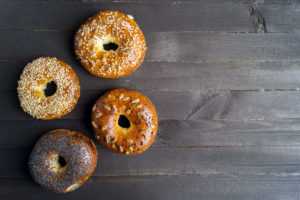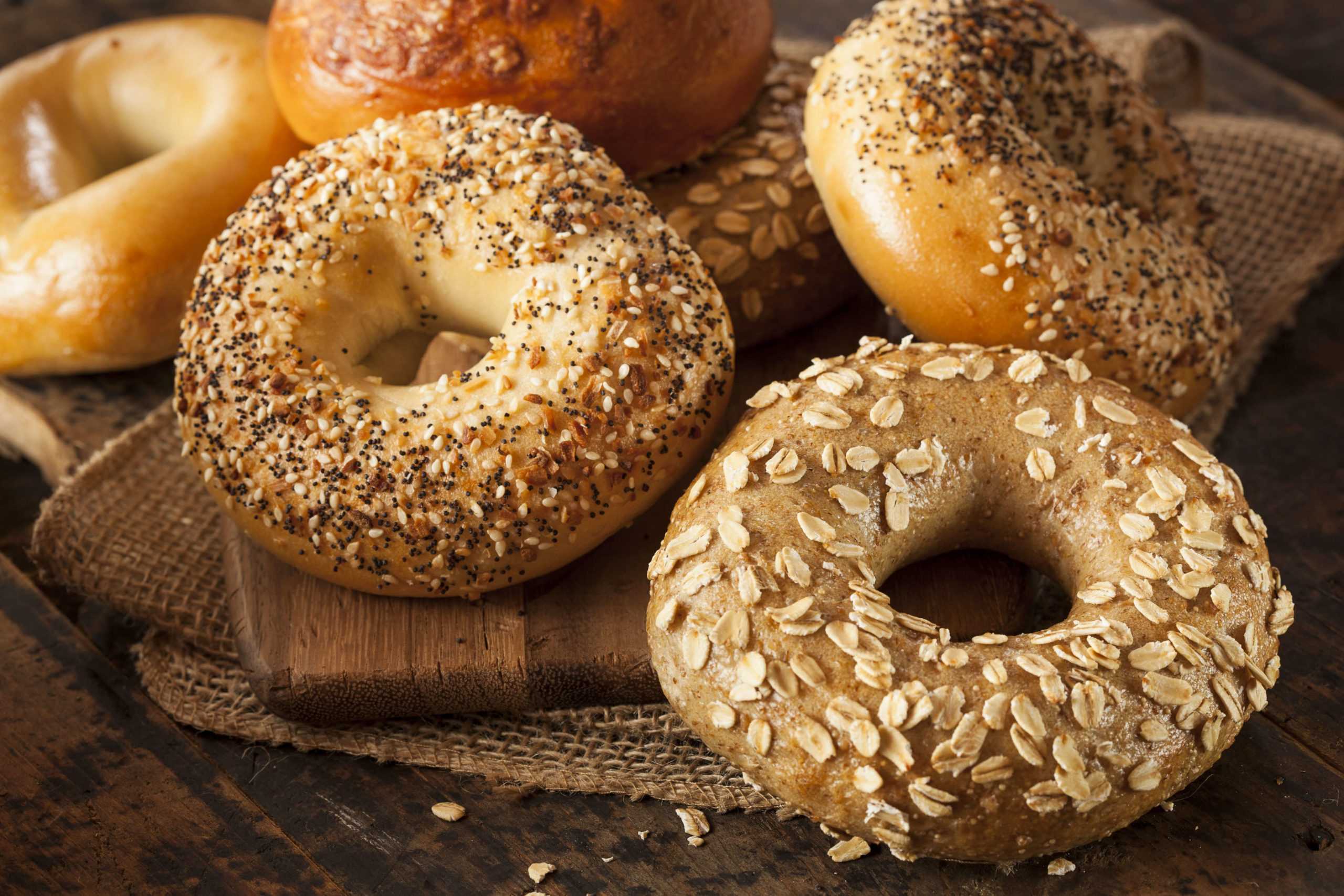In honor of National Bagel Day on January 15th, our expert on all things bread, Food Scientist Alyssa Chircus, breaks down the process behind creating this beloved breakfast food.
Bagels are a low hydration bread – meaning that they require a much lower than normal amount of liquid to make the dough. This helps create the firm chewy texture that is so characteristic of bagels. At the most basic level, bread has 4 main ingredients: flour, water, salt, and some form of leavening agent (yeast, sourdough culture, or chemical leavening). Many bagels also have some form of sweetener and fat to both help develop the flavor of the bread and create a tighter and spongier crumb. The sweetener will vary based on the baker’s preference and the region in which the bagel is made. Honey is used in Montreal style bagels, for example, while New York style bagels more often use a barley malt-based sweetener.
 The process for making bagels is different from many other breads. It starts similarly by mixing and developing the dough and going into its first rise. After rising, the dough is divided and shaped into that characteristic round shape with a hole in the center. Next, the bagels go into their last rise, uncovered at a refrigerated temperature for at least 12 hours. This long slow rise allows the dough to relax and develop a deeper flavor and maintain that tighter, chewier texture. Leaving the bagels uncovered helps to form a skin on the bagels which creates a chewier and crunchier crust and restricts the dough from rising too much.
The process for making bagels is different from many other breads. It starts similarly by mixing and developing the dough and going into its first rise. After rising, the dough is divided and shaped into that characteristic round shape with a hole in the center. Next, the bagels go into their last rise, uncovered at a refrigerated temperature for at least 12 hours. This long slow rise allows the dough to relax and develop a deeper flavor and maintain that tighter, chewier texture. Leaving the bagels uncovered helps to form a skin on the bagels which creates a chewier and crunchier crust and restricts the dough from rising too much.
After this long proof, the bagels go into the first of two cooking steps. The bagels are boiled for no more than 90 seconds in a bath that may contain lye, barley malt syrup, honey, or baking soda. All these inclusions help develop a darker brown crust, but they contribute differently to the final flavor. Lye and baking soda create a basic solution which will lend to a slightly more bitter flavor on the final crust while honey and barley malt are sweeteners. After leaving the boil, the bagels get dressed in any toppings or seeds. Lastly, the bagels are baked to finish off the cooking process and develop a nice golden-brown crust.
Looking to take your bagels to the next level? Contact us today to see how Fuchs can help you make something special.
About the Author
 Alyssa Chircus graduated in 2013 from the University of Delaware, where she majored in Food Science. She joined the Fuchs R&D team over five years ago and is our expert in all things bread and dairy. Alyssa also has expertise in formulating seasonings for non-GMO and organic products.
Alyssa Chircus graduated in 2013 from the University of Delaware, where she majored in Food Science. She joined the Fuchs R&D team over five years ago and is our expert in all things bread and dairy. Alyssa also has expertise in formulating seasonings for non-GMO and organic products.


